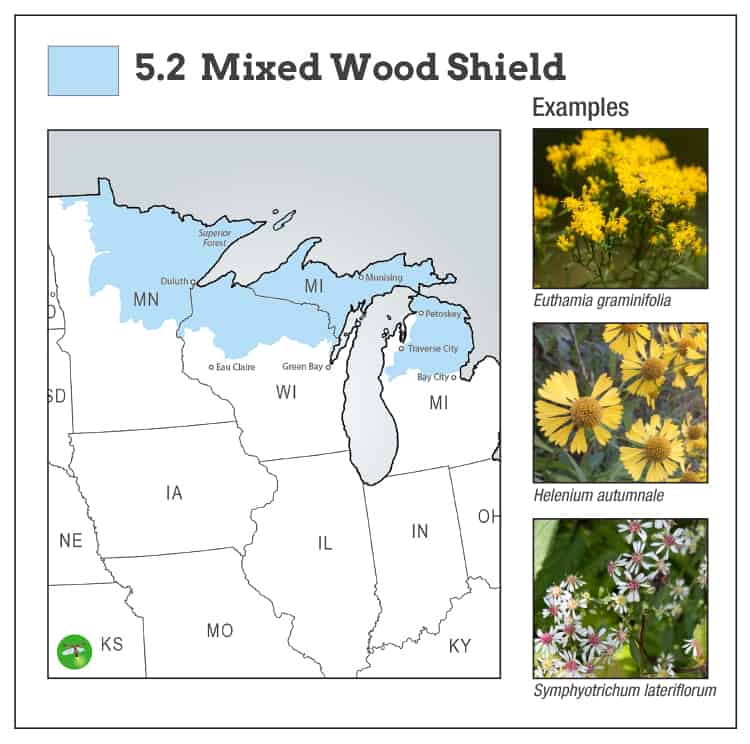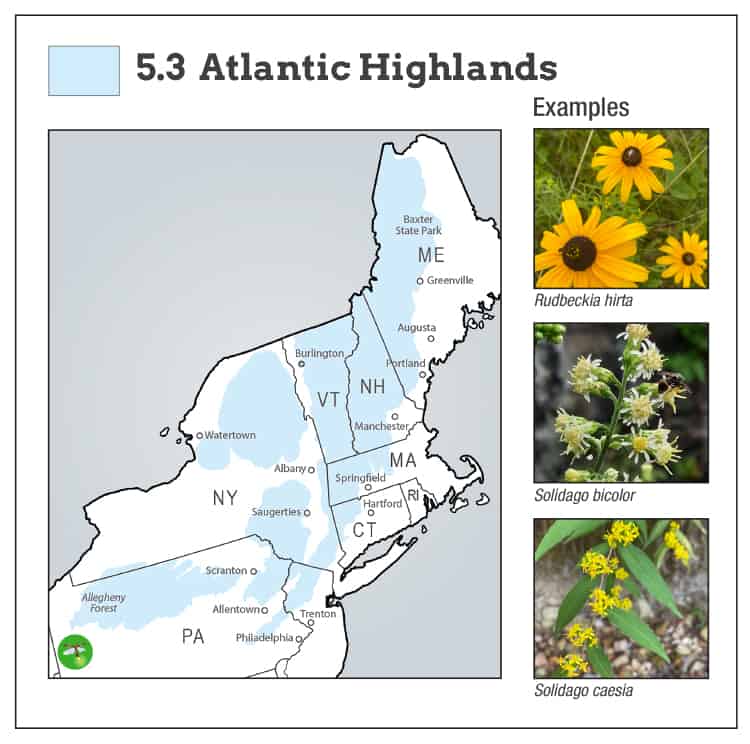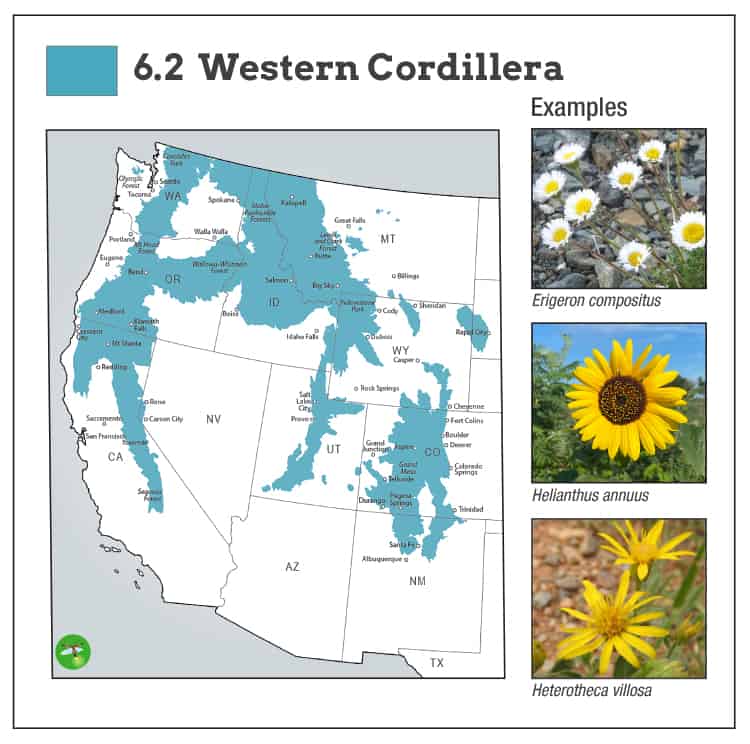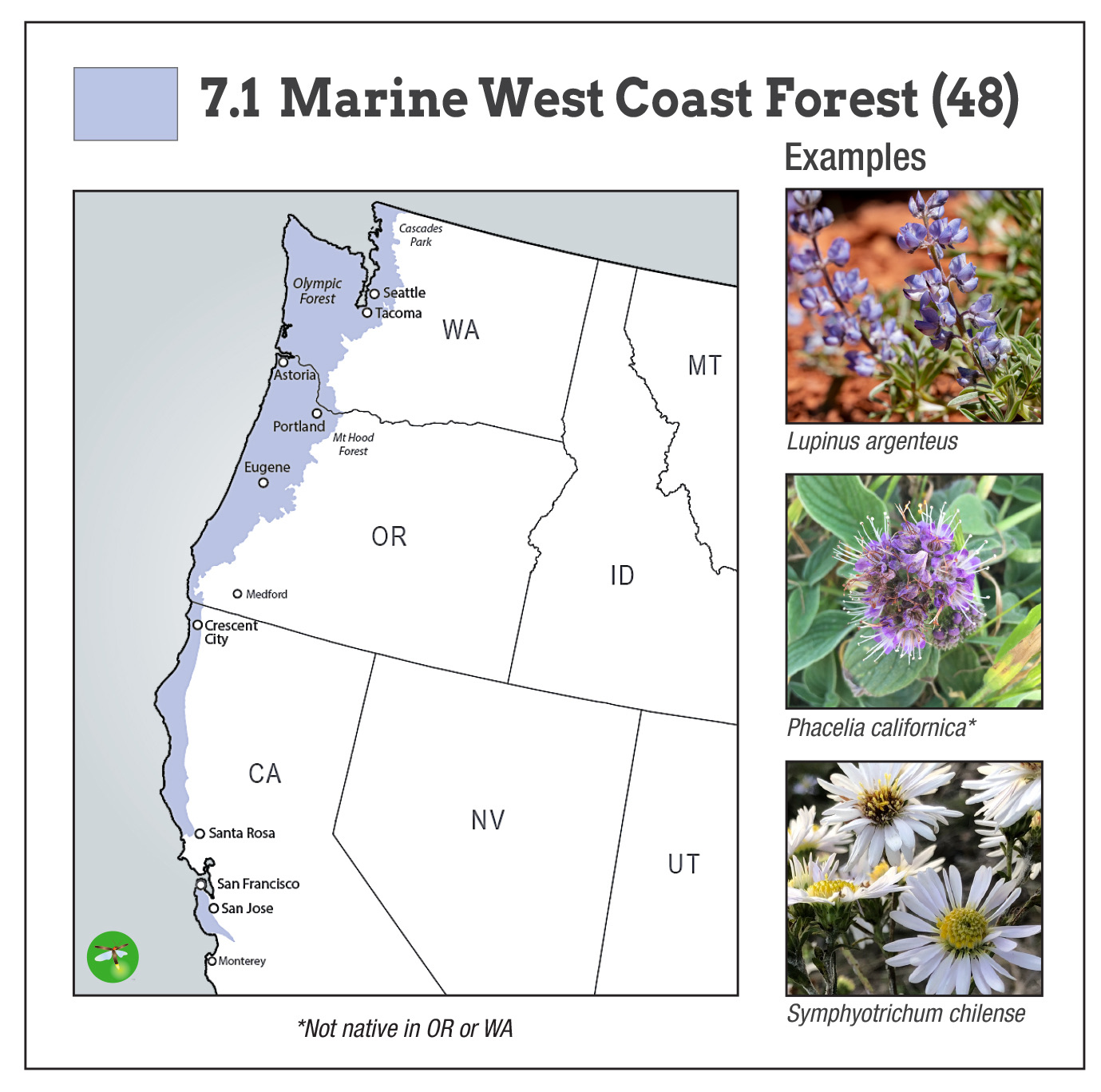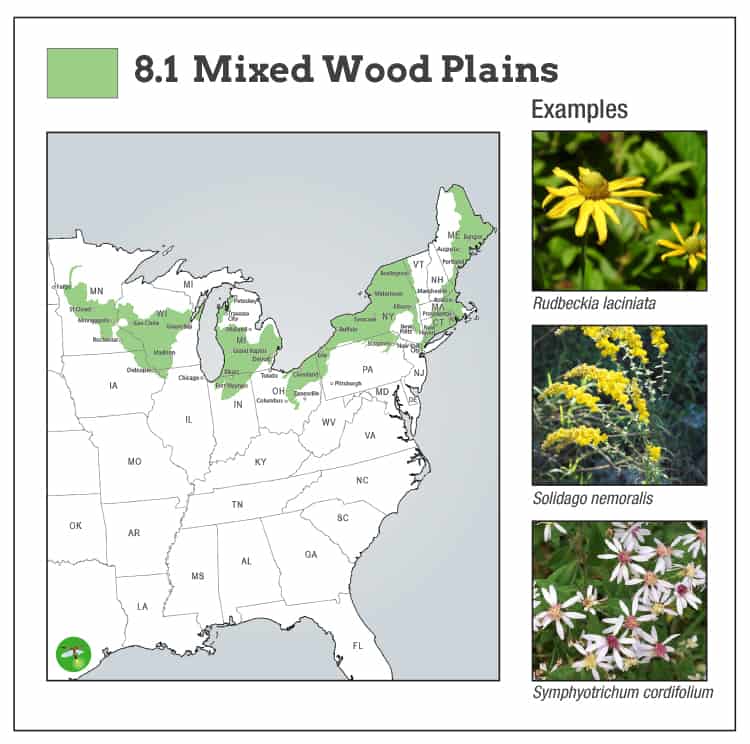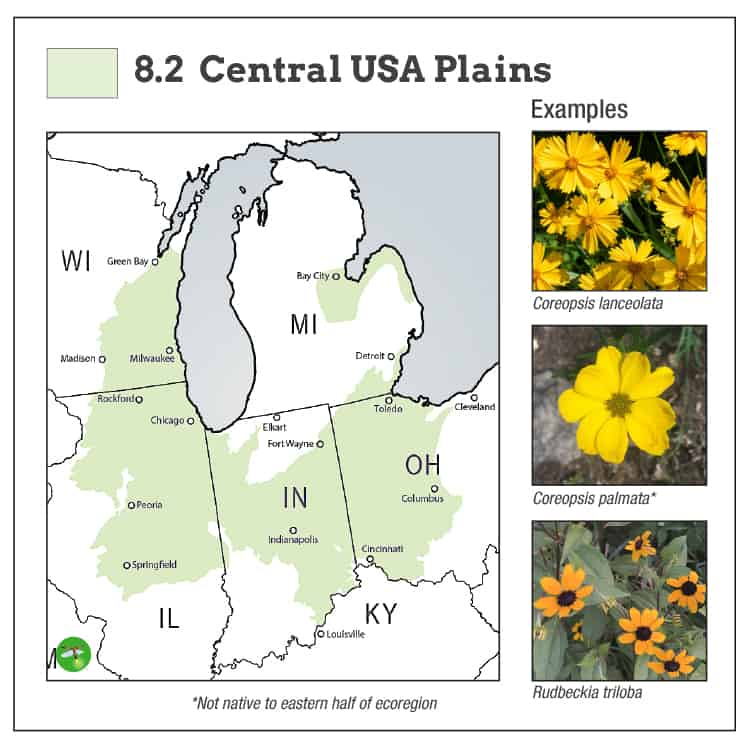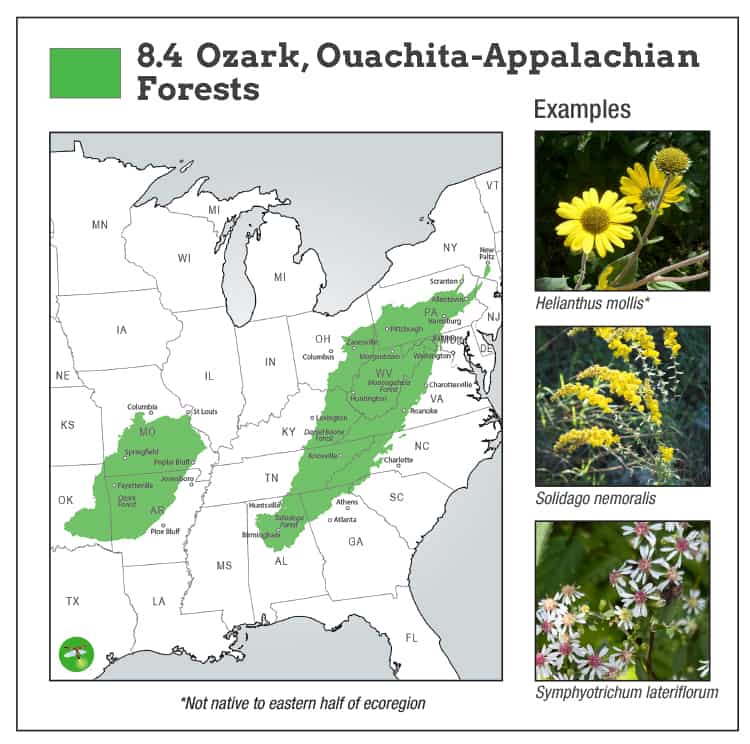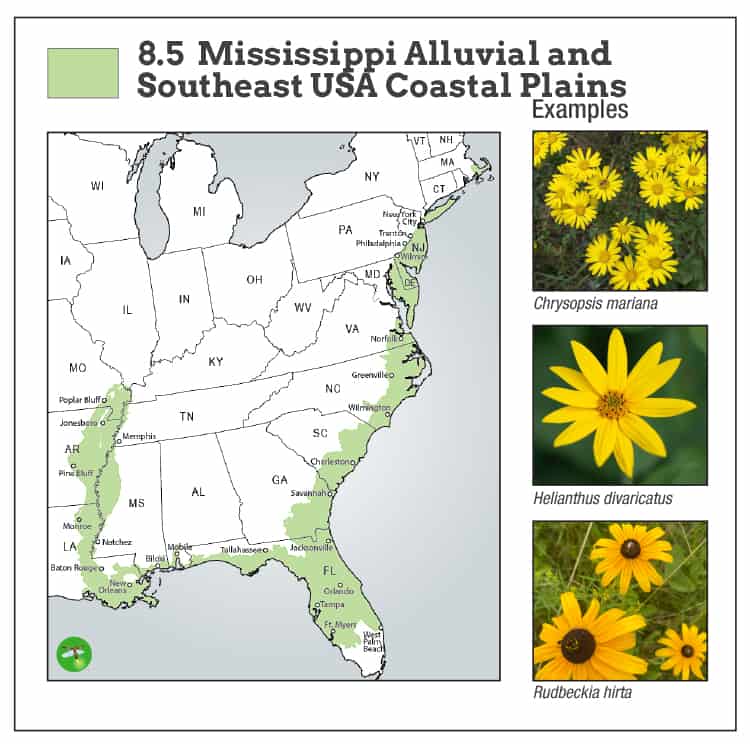CONTAINER GARDENING WITH KEYSTONES
CONTAINER GARDENING WITH KEYSTONES
Find Your Ecoregion Guide Below
1. Search your address -or- zoom to your location
2. Click the map to learn your Ecoregion (make sure to zoom to Level II Ecoregion)
3. Scroll to find the corresponding guide
Find Your Ecoregion Guide Below
1. Search your address -or- zoom to your location
2. Click the map to learn your Ecoregion (make sure to zoom to Level II Ecoregion)
3. Scroll to find the corresponding guide
Regenerating biodiversity is priceless, but hosting this resource is not. If you appreciate these resources and want to help us keep it free, please consider supporting our work with a donation.
Select an ecoregion from the legend below
USA - Lower 48 States
Alaska & Canada
FAQs
Simply put, Keystone Plants are the most productive plants that support the most species! Doug’s research at the University of Delaware has shown that a few genera of native plants, or keystone genera, form the backbone of local ecosystems, particularly in terms of producing the food that fuels insects. By planting just one of these keystone plants you can help restore native biodiversity! Landscapes that do not contain one or more species of keystone genera will have failed food webs, even if the diversity of other plants is high.
We use ecoregions to make it easy to identify the native plants that will work best for your location’s growing conditions and climate. This is a different approach from using a state’s native plant listing. An ecoregion is an area that shares common ecosystem characteristics such as weather, seasons, wildlife, soil, etc. Since states will often have vastly different habitat types and species from one side to the other, ecoregions are particularly useful for geographically grouping native keystone plants. You can find your ecoregion color-coded on the map below. In some cases the plants for your ecoregion may not line up with your State’s listing of native plants but will perform as a keystone plant. If however you prefer to plant by your state’s native plant listing, please refer to the NATIVE PLANTS FINDER.
No Yard? No Problem! – you can still be an important part of regenerating biodiversity on your balcony, terrace, patio, rooftop or deck. Container gardening provides a great opportunity for people without yards to plant native and join the grassroots solution to the biodiversity crisis! We have selected plant species appropriate for container gardening for level II ecoregions across the United States and Canada. These keystone plants have wide native ranges within the ecoregions, support a large variety of native biodiversity, and will provide important refueling pit stops for native pollinators. A PDF of each list is linked beneath the map of the corresponding ecoregion. Please remember to log your container plants ON THE HNP MAP. Every square foot counts!
Many native plants have extensive root systems, so use large pots! Some native species can grow tall and will need a wall, stake, trellis, or hoop for support. Perennial species (plants that live for more than one year) may come back year after year. It is important to leave pots outside in a semi-sheltered area so that the plants go through natural cold cycles. Clay, ceramic, and terracotta pots may crack in low temperatures. If you live in an area with cold winters, consider using plastic pots. At the end of the season, if you don’t want to keep your potted plant, either plant it in the ground or give it to a friend. Please remember to log your container plants ON THE HNP MAP. Every square foot counts!
FAQs
Simply put, Keystone Plants are the most productive plants that support the most species! Doug’s research at the University of Delaware has shown that a few genera of native plants, or keystone genera, form the backbone of local ecosystems, particularly in terms of producing the food that fuels insects. By planting just one of these keystone plants you can help restore native biodiversity! Landscapes that do not contain one or more species of keystone genera will have failed food webs, even if the diversity of other plants is high.
We use ecoregions to make it easy to identify the native plants that will work best for your location’s growing conditions and climate. This is a different approach from using a state’s native plant listing. An ecoregion is an area that shares common ecosystem characteristics such as weather, seasons, wildlife, soil, etc. Since states will often have vastly different habitat types and species from one side to the other, ecoregions are particularly useful for geographically grouping native keystone plants. You can find your ecoregion color-coded on the map below. In some cases the plants for your ecoregion may not line up with your State’s listing of native plants but will perform as a keystone plant. If however you prefer to plant by your state’s native plant listing, please refer to the NATIVE PLANTS FINDER.
No Yard? No Problem! – you can still be an important part of regenerating biodiversity on your balcony, terrace, patio, rooftop or deck. Container gardening provides a great opportunity for people without yards to plant native and join the grassroots solution to the biodiversity crisis! We have selected plant species appropriate for container gardening for level II ecoregions across the United States and Canada. These keystone plants have wide native ranges within the ecoregions, support a large variety of native biodiversity, and will provide important refueling pit stops for native pollinators. A PDF of each list is linked beneath the map of the corresponding ecoregion. Please remember to log your container plants ON THE HNP MAP. Every square foot counts!
Many native plants have extensive root systems, so use large pots! Some native species can grow tall and will need a wall, stake, trellis, or hoop for support. Perennial species (plants that live for more than one year) may come back year after year. It is important to leave pots outside in a semi-sheltered area so that the plants go through natural cold cycles. Clay, ceramic, and terracotta pots may crack in low temperatures. If you live in an area with cold winters, consider using plastic pots. At the end of the season, if you don’t want to keep your potted plant, either plant it in the ground or give it to a friend. Please remember to log your container plants ON THE HNP MAP. Every square foot counts!
Cartography by KickMap, LLC using ESRI's ArcMap v10.3. Data used were modified EPA Ecoregion Level II.
U.S. Environmental Protection Agency (2001). NA_Eco_Level2. vector digital data. U.S. EPA Office of Research & Development (ORD) - National Health and Environmental Effects Research Laboratory (NHEERL).

